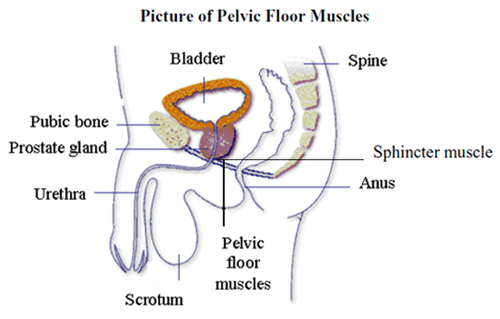
What is it?
It stretches from your front or pubic bone under your pubic area to your back or coccyx bone.
It stretches from the left to the right sitting bone.
Your pelvic floor surrounds the outlet of your:
Bladder (urethra)
Bowel (anus)
What does it do?
The pelvic floor acts as a sling or hammock, providing support underneath your pelvic organs.
When you contract your pelvic floor muscles you squeeze and lift this area inside yourself.
This flattens and raises the pelvic floor region which elevates and supports the pelvic organs.
This contraction also compresses your urethra and anus.
Your pelvic floor lifts and closes your bladder when you walk, talk, cough sneeze or laugh.
It also opens and drops when you urinate.
To enable you to urinate or pass a bowel motion the pelvic floor muscles must be able to fully relax.
An App to help you remember your exercises - Squeezy
Radical Prostatectomy
When your prostate is removed your bladder sits lower and some muscles near your bladder are now weaker, partially removed or temporarily alseep due to nerve injury.
Before your radical prostatectomy you are asked to do pelvic floor exercises to prepare your pelvic floor for the big job it has to do afterwards.
Your instructons for this is to retract, draw your penis inwards and hold it for a long as you can up to 60 seconds.
You then rest for at least 10 seconds and repeat this until your muscles are tired.
You will also be asked to do quick pulses 10 in a row at the end of each session.
Your physiotherapist will advise you of your programme based on your individual situation.

